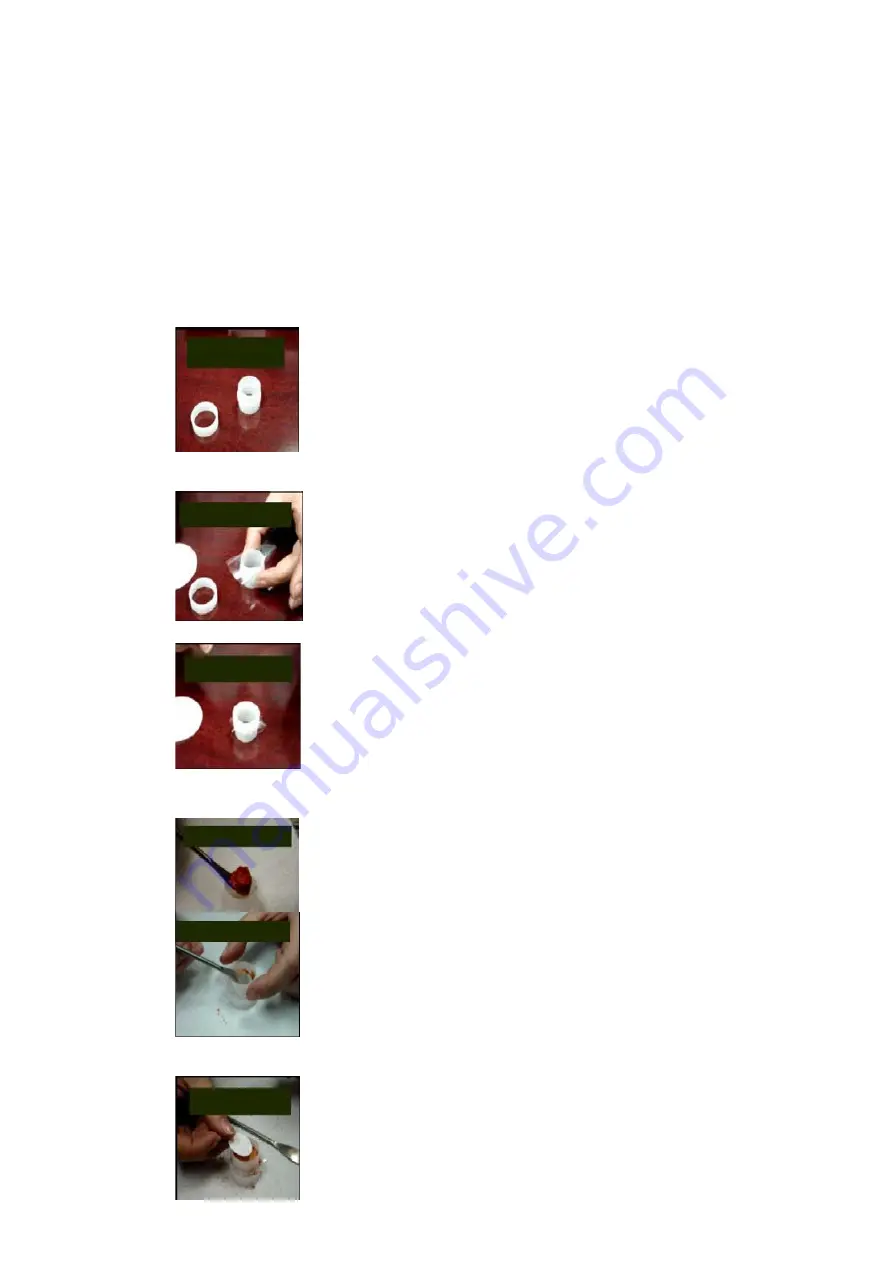
- 26 -
of the sample through #60 (250 μm) and #120 (125 μm) mesh. Re-grind the un-passed
material until the entire fraction is able to pass. Mix the resulting sample.
5.2.3 Placing the Sample in an XRF Sample Cup
The container used to hold the sample will affect the accuracy of the
measurement. Use a container with as thin-walled a window as is convenient and use
the same kind of container and window for each sample. Consistency and careful
attention to detail are keys to accurate measurement.
Note: The sample container should be a sample cup of a
type that can be filled from the rear; that is, the side
opposite the window. Drawell recommends using a 1/4 mil
(6.3mm) Polypropelene film. A supply of cups and films
are included.
Place a circle of polypropelene film on top of an XRF
sample cup. This film goes on the end of the cup with the
indented ring. Drawell recommends preparing the cup
ahead of time, if possible.
Secure the film with the collar. The flange inside the collar
faces down and snaps into the indented ring of the cup.
Inspect the installed film window for continuity and
smooth, taut appearance.
Set the cup on a flat surface film-window-side down. Fill it
with at least five grams of the prepared sample, making
sure that no voids or uneven layers.
Lightly tamp the sample into the cup. The end of the pestle
makes a convenient tamper.
Place a filter-paper disk on the sample after tamping it.





































